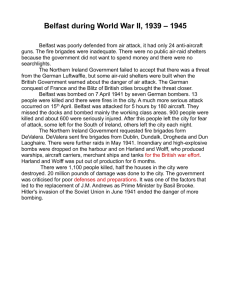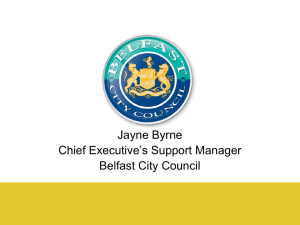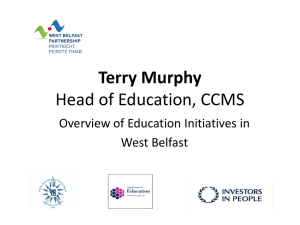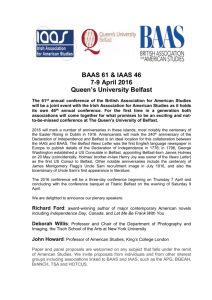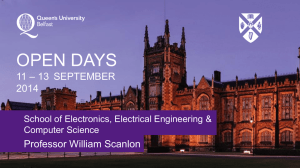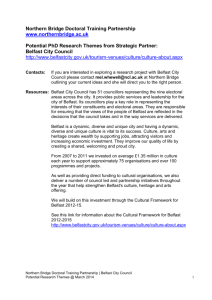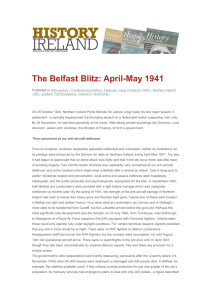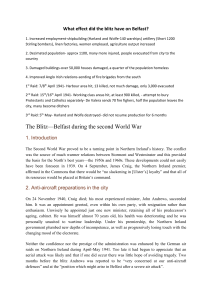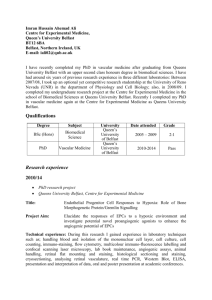Dan McGinn, UUJ - Belfast Media Group
advertisement
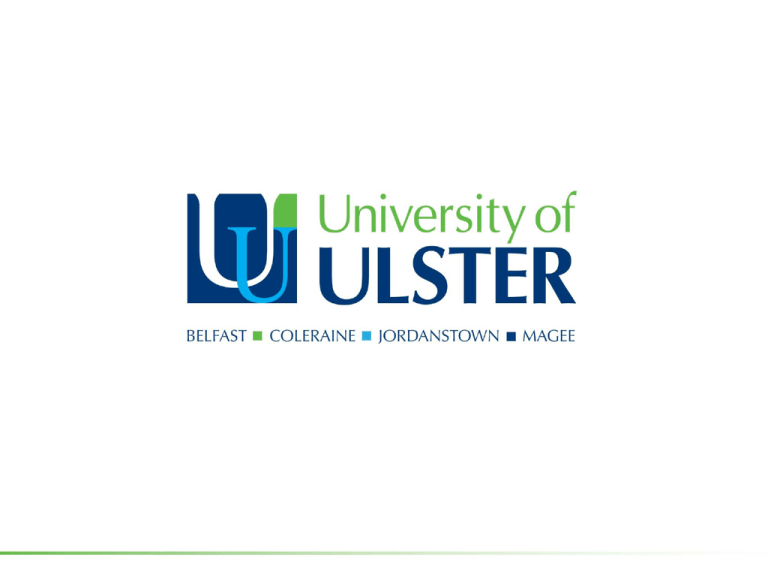
University’s Development Plan • • • • • Overview of the University Context for Development Plans The Design Process The Implications for the City The Challenge Overview of the University History • Founded in 1984, two years after a British Government review of higher education in Northern Ireland. • A merger of New University of Ulster in Coleraine, Ulster Polytechnic in Jordanstown, Belfast College of Art and Magee College in DerryLondonderry. • Immediately successful in terms of student demand. Overview of the University Facts and Figures • Has grown from 11,000 students over 27 years to 25,000 full and part-time students across all four campuses. • Employs over 3,000 staff with an annual turnover of $327 million (£200 million). • Has six faculties across its campuses – Life and Health Sciences, Arts, Computing and Engineering, Social Sciences, Art, Design and Built Environment, Ulster Business School. • Is a major contributor to the Research and Development capacity within Northern Ireland, with 16 Research Institutes supporting local business and industry. Overview of the University Facts and Figures • • • • • • Proved its research excellence in the 2008 Research Assessment Exercise – 45th out of 132 institutions with Biomedical Sciences, Nursing and Celtic Studies finishing in the top three UK-wide in the respective subject areas. Prepares its graduates for work with professionally accredited courses – Chartered Institute for Management Accountants, National Council for the Training of Journalists. Promotes technology and knowledge transfer and the commercial exploitation of ideas through its Office of Innovation Has shown a real commitment to widening access to higher education – leading the way with lifelong learning, eLearning and schools initiatives. Boasts 140,000 alumni in 121 countries. Hosts students from 80 countries. Chancellor of the University Honorary Doctors Honorary Doctors Honorary Doctors Honorary Doctors Context of Development Plans Two Principal Driving Forces: - The University’s Corporate Plan (2006/7 to 2010/11) - The 2006 DEL-commissioned Independent Review of the Physical Estate across the whole higher education sector Context of Development Plans Greater Belfast Development Plan • Independent Review of Physical Estate conducted by JM Consulting identified main Jordanstown building was reaching end of economic life and would be difficult to renovate. • Report also commissioned by the university reinforced this finding and the university began to focus on expansion of Belfast campus, purchasing a number of sites in York Street. • Greater Belfast Development Plan envisages a rebalancing of student numbers between Jordanstown and Belfast – with most of the existing activity in Jordanstown moving to York Street and Jordanstown developing further into Ireland’s leading sports campus. Context of Development Plans • Context of Development Plans Context of Development Plans Context of Development Plans Context of Development Plans Context of Development Plans The Design Process • After design competition, University appointed London and Bath based firm FieldenCleggBradley to work on the concept of the new campus. • University acquired buildings around the existing city centre campus – footprint equivalent to the Victoria Square development in the city. • Vice Chancellor, Professor Richard Barnett wanted a campus which reflected the University’s philosophy of an institution open to all, without iron gates or walls. • FieldenCleggBradley team, led by Sam Tyler, has focussed on creating a development which draws upon the dramatic landscape of Belfast and the surrounding countryside and the historic streets of Belfast. The Design Process Royal Avenue Donegall St The two main city grids intersect at the GBD Site Belfast City Grids The Georgian Grid & Victorian Grid Heading Concept Diagram connecting city grid to landscape Belfast - Landscape & City Concept Sketches Sketch Building Section ( North / South ) – Showing key circulation & main internal /external spaces Greater Belfast Development Concept Sketches Sketch Building Section – ( East / West ) Greater Belfast Development The Implications for the City • The University is relocating the bulk of the activity on its largest campus, Jordanstown to Belfast city centre. • During the course of a full day that will mean 14,000 people – 12,500 students and 1,500 staff – will be using the facility every day. • They will be studying in a world class 21st century educational facility. • The new Belfast campus will offer an opportunity to reconnect the city centre with communities to the north, west, east and south. • Linking in with other developments in the Cathedral Quarter, Harbour and Titanic Quarter, the development offers an opportunity to regenerate, reshape and re-imagine the city in terms of the way it does business, its cultural and tourism offering, its transport links. The Challenge • • • • • • • Working with Regional and City Government Developing and marketing the Learning City Nurturing talent Reaching out to and including Communities Maximising Commercial and Cultural Opportunities Delivering the Right Transport Links Reclaiming the Streets, Open Space and Going Back to the Future • Connecting with the world
